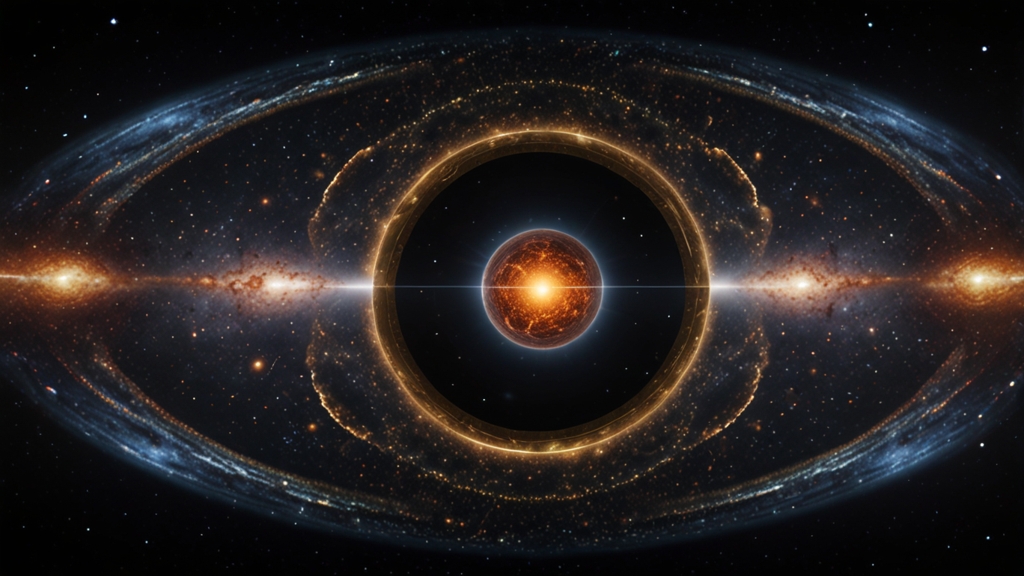Unlocking the Universe: The Secrets Physics Holds
The universe is a vast expanse filled with mysteries that have intrigued humanity for millennia. From the tiniest subatomic particles to the grand scale of cosmic structures, physics provides the tools and concepts necessary to understand the fundamental principles governing our reality. Let's embark on a journey to uncover the secrets that physics holds, exploring some of the most groundbreaking discoveries and theories.
The Quantum Realm: Strange and Intriguing
One of the most profound and puzzling areas of physics is quantum mechanics. At the subatomic level, particles do not behave in ways that are intuitive to our everyday experiences. Instead, they exist in a state of probability, only adopting defined positions when observed.
"If you think you understand quantum mechanics, you don't understand quantum mechanics." - Richard P. Feynman
This quote by physicist Richard Feynman captures the perplexing nature of quantum mechanics. Consider the famous double-slit experiment, which demonstrates that particles such as electrons can display characteristics of both waves and particles. When not observed, they pass through both slits simultaneously, creating an interference pattern. However, when measured, they only pass through one slit, behaving as particles. This wave-particle duality is just one of the many mind-boggling phenomena in the quantum world.
Relativity: The Fabric of Spacetime
Another cornerstone of modern physics is Albert Einstein's theory of relativity, which revolutionized our understanding of space, time, and gravity. Special relativity introduced the concept that time and space are interconnected and relative, depending on the observer's velocity.
The more comprehensive general theory of relativity proposed that gravity is not a force but rather a curvature in spacetime caused by massive objects. Imagine a trampoline with a heavy ball in the center; the ball creates a dip, and smaller objects on the surface will naturally move toward it. This model elegantly explains phenomena such as the bending of light around massive objects and the expansion of the universe.
"The distinction between past, present, and future is only a stubbornly persistent illusion." - Albert Einstein
Unifying Forces: The Quest for a Theory of Everything
Physicists have long sought a unified theory that can describe all fundamental forces and particles within a single framework. This ambitious endeavor, known as the search for a "Theory of Everything," aims to reconcile general relativity, which governs the macrocosm, with quantum mechanics, the ruler of the microcosm.
One of the leading candidates for this unification is string theory, which posits that the fundamental components of the universe are not point-like particles but tiny, vibrating strings. Different vibration patterns correspond to various particles. Though compelling, string theory has yet to be experimentally verified and remains a hotly debated topic within the scientific community.
The Cosmic Frontier: Dark Matter and Dark Energy
Despite enormous strides in our understanding, the universe harbors significant unknowns. Observations indicate that the universe is composed mostly of dark matter and dark energy, neither of which we can directly observe yet significantly influence cosmic structures and dynamics.
Dark matter acts as an invisible scaffold, holding galaxies together with its gravitational pull. Without it, galaxies would not possess enough mass to maintain their shapes. Dark energy, on the other hand, is thought to be responsible for the accelerated expansion of the universe.
"We are in a universe that we don’t understand, but we have surrounded our ignorance with cool stuff." - John Mather
The hunt for understanding these mysterious components is ongoing, with experiments like the Large Hadron Collider and space telescopes constantly gathering data to piece together this cosmic puzzle.
Conclusion: The Journey Continues
The field of physics continually evolves, pushing the boundaries of human knowledge and challenging our perceptions of reality. As we unlock more secrets of the universe, we move closer to comprehending the fundamental truths about existence. Although we have made incredible progress, many mysteries remain, inviting future generations to carry on the quest for understanding.
Whether governed by the strange rules of quantum mechanics, the elegant folds of spacetime, or dark forces yet to be fully comprehended, the universe beckons us to explore, question, and learn. Physics, with its unrelenting quest for knowledge, remains our most powerful tool in unraveling the secrets of the cosmos.






